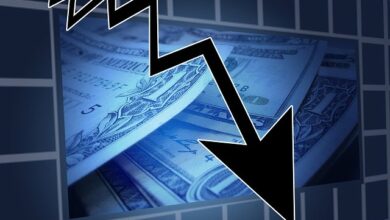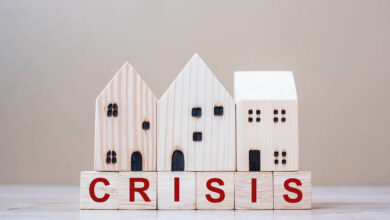The last few years have been an absolutely chaotic time for the real estate industry. Beginning with the COVID-19 pandemic, the market free fell into a state of chaos. Showing homes became impossible due to stay-at-home orders, jobs were lost as companies shut down either temporarily or permanently, and the rest of the economy struggled to find solid footing. While we’re more than three years removed from the first case of the COVID-19 virus showing up on American shores, the real estate market is still struggling to recover.
As 2022 came to a close, interest rates were higher than they had been in decades. People are struggling to get the mortgages that they need to purchase a home, and to make matters worse, there haven’t been enough homes on the market to even meet the limited demand. The rising cost of building materials has created a dearth in new constructions, furthering the inventory crisis that has made things even more complex than they were before.
People continue to move away from the large metropolitan areas that used to be some of the most highly sought after areas for homebuyers, instead choosing to live in smaller suburban areas. Now that we’re roughly one month into the first quarter of 2023, a period of time where a lot of things don’t often change in the market, it’s important to start looking to the future to gain a better idea of what you may be able to expect from the real estate market in 2023.
While the information provided here is based on the research of economists and real estate industry experts, it is important to note that these are all predictions. There is no way to guarantee with a certainty how the real estate market will look 12 months from now or even in Q2. However, we can rely on the information provided by the brightest minds in the industry to gain a better idea on what to expect.
Continued Slowdown in Home Sales
As policymakers in Washington looked for ways to stabilize the economy in the wake of the pandemic, one of the first steps they took was to drop interest rates. After all, if they could encourage people to borrow money, it would be much easier to keep cash flowing through the economy. 2020 and 2021 provided some of the lowest interest rates in recorded US history.
Unfortunately, the only way to further stabilize the economy was to raise interest rates in 2022. It’s not feasible to leave rates at all-time lows, so the same policy makers who dropped rates had to raise them. This led to a drought in home sales as people struggled to obtain mortgages. Not only were lenders turning down more applicants, the applicants who were qualified for loans often decided to wait for rates to return to a more normal rate.
Most economists and real estate industry experts believe that home sales are going to remain slow through the first two quarters of 2023. While experts believe that sales will pick up during the third quarter of the year, the continued decrease in home sales is alarming. The National Association of Realtors (NAR) reports that the early-2023 decline should be around 7%, but Redfin, one of the largest online real estate brokerages in the world, has their projections closer to 16%.
Obviously, no one wants to see the market continue to struggle, and there is some level of disagreement about how bad that struggle will be, there is a general agreement about the market recovering on the back half of the year.
Mortgage Rates Will Level Out
Do you recall how we said that it wasn’t viable to leave interest rates at record lows? In the same vein, leaving them at such high rates for a long period of time isn’t a viable option, either. With that in mind, you should expect mortgage rates to return to a state of normalcy in 2023. In fact, it’s already starting to happen.
In early November of 2022, mortgage rates hit 7.08%, which was higher than they had been in more than 20 years. Beginning near the end of December, rates have started declining, which is great news for buyers and sellers alike.
In the same way that rates didn’t reach record highs in one day, they won’t return to normal that quickly. However, most economists believe that we can expect to see mortgage rates below 6% by the end of the year. Please take note of the fact that just because rates are expected to drop, you shouldn’t’ assume that they’re going to plummet back to the 3% range that we saw a few years ago. Instead, rates ranging from 4% to 5.5% should be the norm by the end of 2023.
Money Talks
Every industry relies on the principles of supply and demand, but it could easily be argued that the real estate industry relies on it more heavily than others. With that in mind, the decrease in available inventory has resulted in home prices that are significantly higher than they were just a few years ago. In most cases, a decrease in the number of buyers (such as the one we’ve seen in recent years) leads to home prices dropping. However, since fewer new homes are being built and existing homeowners aren’t looking to move, it’s become possible for the few sellers on the market to raise prices for the few buyers in the market, leading to a near screeching halt.
Thankfully, industry experts believe that home prices will return to a state of normalcy in 2023. As is the case with the other market predictions that we’ve discussed, these changes likely won’t take place until the second half of the year. While there is a little discrepancy in how much people expect home prices to drop, it’s safe to assume we won’t see the double-digit drops that were a hallmark of the pandemic era. However, price drops ranging from 4% to 6% are feasible.
Inventory Levels Should Return to Normal
One of the most promising predictions involving the real estate market in 2023 involves inventory levels. As of today, there is a little more than 3 months’ worth of inventory on the market according to a study published by NAR. While interest rates and other factors can shift quickly, it takes longer for inventory levels to stabilize.
One of the most important factors in housing inventory involves the construction of new homes. Building materials are more expensive than they have ever been, and there’s also a shortage of skilled laborers. However, economists believe that both of those trends will shift back towards optimal levels by the end of the second quarter, meaning that there is a chance for home sales to improve by late summer and early fall of 2023.
We will likely never see as many homes on the market as we saw at the beginning of the pandemic. When people realized that they could sell their homes for a profit, there were people who had no intentions of selling their homes putting signs in their yards. That likely won’t be the case this year, but NAR does report that they expect the inventory level to increase by roughly 23% by the beginning of Q3.
Buying and selling in 2023 should look considerably different than it did in 2022, and that’s great news, no matter which side of the aisle you’re on. Buyers, you should have more options in 2023. Sellers, you should have more qualified buyers interested in your properties in 2023. This increase in active participants in the real estate market is great news for everyone, as a healthy real estate market is one of the cornerstones of a thriving national economy.






